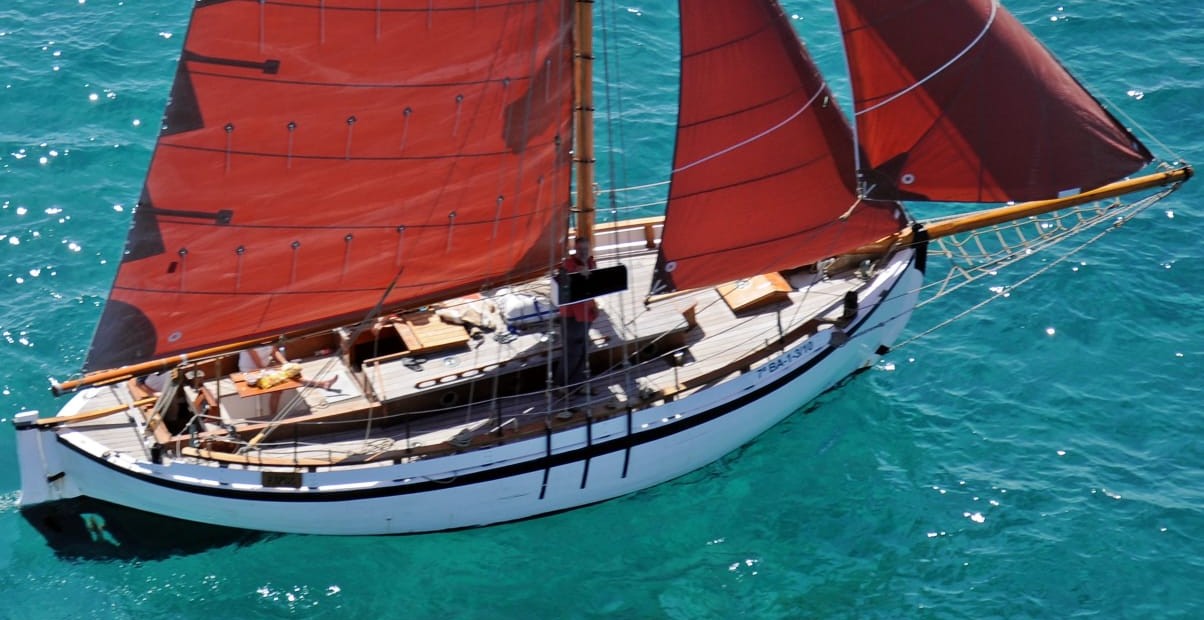Raptus, Colin Archer typeRef. CP127

A typical Northern Europe yacht of sturdy construction, good sailer with a wide interior for her dimensions. She is in good general conditions, with some work to be finished.
EUR 15,000 ,-
Overview
Details
Rig
Deck Hard-ware
Engine System
Hours:
Sails
Electronics
Electric System
Internal lay-out
Barcos Singulares Comments
The history of the K. Christensen Shipyard began in 1828 when Knut, Christen's father, purchased a shed in the village of Moen, on the Risør fjord, located about 230 km south of Christiania, now Oslo. Thirty years after the purchase, Knut built about five fishing boats, thus beginning the shipbuilding activity that would characterise the place for the next hundred years and occupy four generations of his family. Christen Knutsen (Knut's son) started his own business in 1875. Three years earlier, a still little-known naval architect had presented a new boat design for Norwegian harbour pilots. His name was Colin Archer. The Colin Archer type was adopted by Scandinavian fishermen and deep-sea sailors who were looking for a sturdy and safe boat in extreme conditions and who did not need speed among their variables. Christen Knutsen built fishing boats, exploration boats and a few yachts, almost always following the lines of the Colin Archer, and upon his death in 1913, he was succeeded by his son Knut Christensen. In 1932, Knut built, among others, a sturdy fishing boat that, due to its characteristics, was named Kvik, meaning fast in Danish. The Kvik belonged to Oscar Larsen, a Norwegian fisherman who used it all his life. He and his family sailed the boat for thirty years, then sold it to another fisherman who continued to use it as a working vessel, but changed its name to Raptus, playing on the name of the engine it carried, a 17-horsepower, single-cylinder, two-stroke, semi-diesel Rapp. In 1971, when the Raptus was about to celebrate forty years of activity, another change of ownership marked a new stage in its life, perhaps saving it from a sad and likely end. From 1973 onwards, the boat underwent various phases of restoration, with the replacement of almost all the planking, several frames and the old wheelhouse, typical of a fishing boat, with a lower and longer cabin, which made the interior more habitable. It was also fitted with new ketch rigging, which at the time seemed to be the most manageable option, although it soon became clear that this was not the case and that the Raptus needed more power in its sails to carry its fifteen tonnes of displacement. The boat was then taken to its original shipyard in 1980. There, the two-masted rigging was replaced with the current gaff-rigged cutter, which is more powerful and better suited to the boat's dimensions. The deck was also replaced with a 4-centimetre-thick solid teak deck with straight slats, so characteristic of old, professional and sturdy constructions. The famous Rapp engine was also removed and replaced by the current British Leyland, which continues to function perfectly. The water and diesel tanks were also renovated. After sailing extensively with another German owner, both in the Baltic and the southern seas of Europe, the Raptus was left almost abandoned in the Canary Islands, where it was found by its current owner, who took on the task of restoring it, replacing several sections of the hull, the stem, the mast and the boom, as well as the electrical and electronic systems. He also fitted new sails, following the traditional rigging of early 20th-century Norwegian fishing boats and maintaining the number of sails of the Kvik. Today it is in good overall condition, although its owner's health does not allow him to continue caring for it as it needs. The strong structure with its enormous 20-centimetre-thick Riga pine frames has stood the test of time very well. The hull planks are 4 centimetres thick, as is the teak structural deck. Today, it needs a new coat of paint on the hull and bow, varnish on the deck and the replacement of one frame and two planks in the stern area on the port side: work that can be carried out with relative ease as it is in very accessible areas.